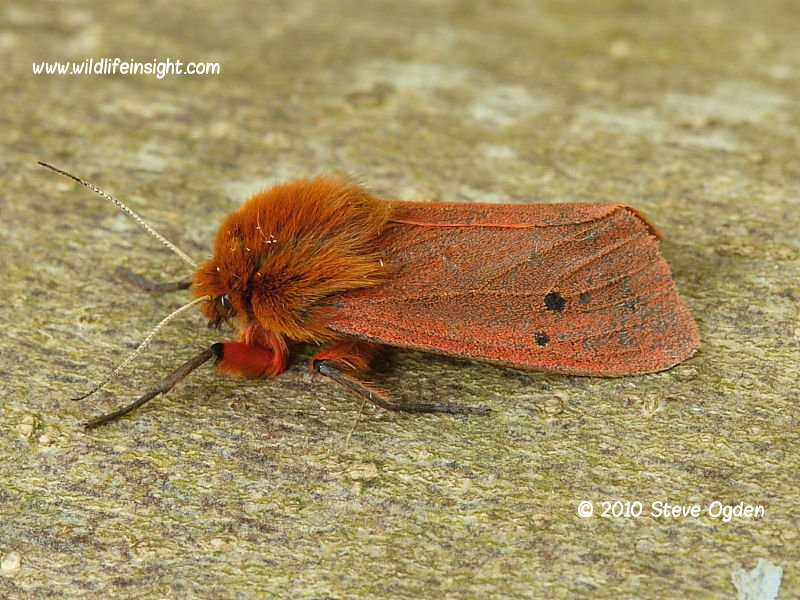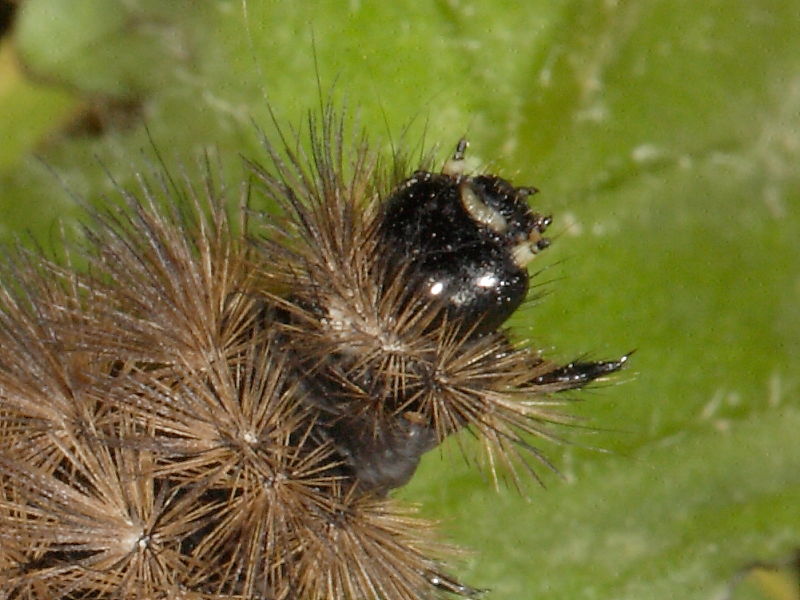The Ruby Tiger adult moth Phragmatobia fuliginosa
Distribution and habitat of the Ruby Tiger Moth in the British Isles
The Ruby Tiger is well distributed throughout most of the UK, becoming less common further north and into Scotland.
It’s found in varied habitats but most numerous in open countryside including coastal areas, moorland and heathland. Small numbers are also attracted to light in gardens.
Identifying features of the Ruby Tiger moth
The species derives its name from its pinky red forewings.
The average wing span is about 34mm.
One or two black spots are usually evident in the middle of the forewings and the top half of the legs are covered in red or brown hairs and the upper leg coated in red hair.
The abdomen is red with black markings. The underwings are most commonly a subtle, reddy pink with black markings.
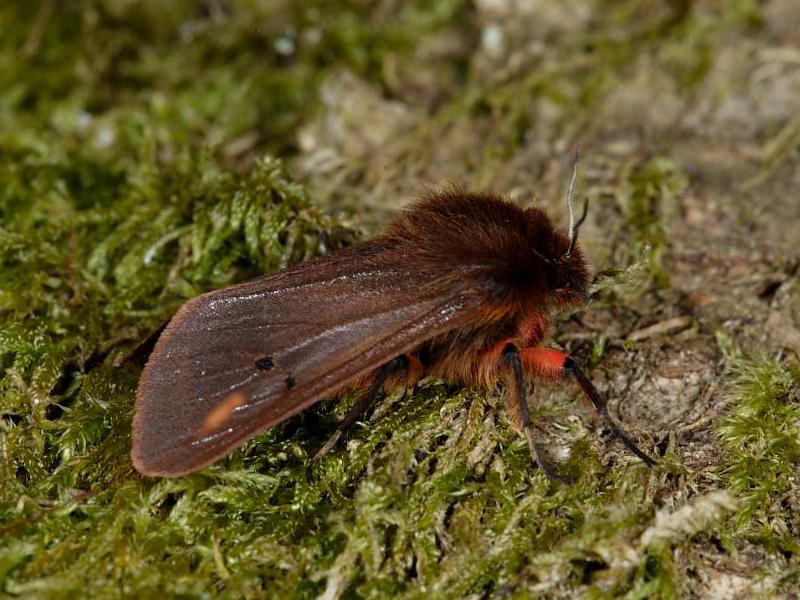
The colour of the forewing is generally a pinkish brown but much darker borealis forms do occur and are particularly common in Scotland.
When fresh the thinly scaled wings have a metallic sheen.
The moths can appear dramatically red if seen flying during the day in strong sunlight, exposing the reddish underwings and abdomen.
The Ruby Tiger is unlikely to be confused with any of the other common tiger moth species in the British Isles such as the Garden Tiger, the Scarlet Tiger, the Cream-spot Tiger or the scarcer Jersey Tiger Moth.
Ruby Tiger Moth Life Cycle
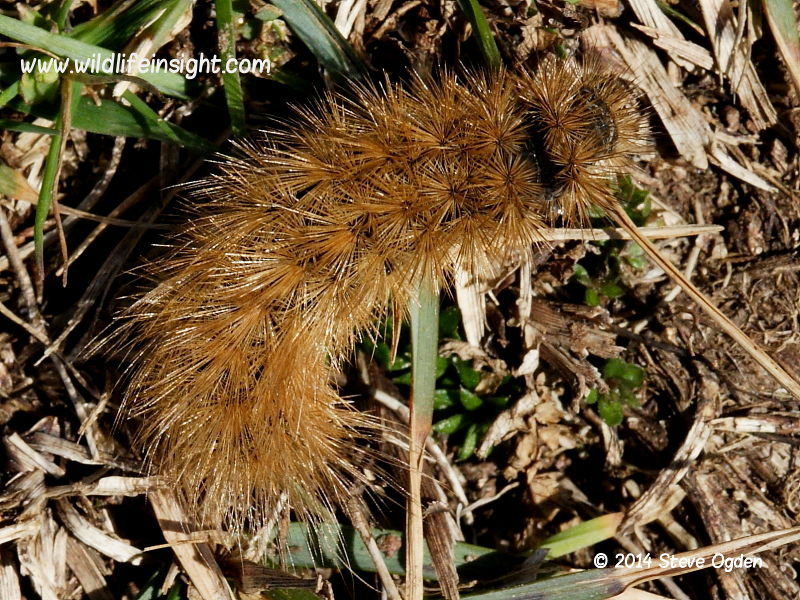
In the milder south of the UK the moth flies in two generations, the main one between April and June and a later, smaller one in August and September, but it has been recorded in all months between March and November.
The adults mainly fly at night when they are attracted to light, but may also be recorded during the day in small numbers.
The eggs, which are laid in batches on the food plant, hatch in 7-10 days.
The caterpillars of first broods are fully grown in less than 30 days and pupate inside a cocoon formed amongst shrubs and leaf/plant litter.
First generation moths emerge in about 28 days depending on temperature.
Second broods overwinter as fully grown caterpillars and emerge during early spring.
The fully grown caterpillars are often seen wandering in search of a pupation site or basking on low growing vegetation, such as grasses, during the day prior to overwintering.
The Ruby Tiger Moth caterpillar
The fully grown caterpillars can vary in colour and may be a reddy brown, browny grey, black or less commonly dark red.
The reddish dorsal line isn’t easy to see amongst the hair of fully grown caterpillars, particularly those that overwinter.
The black head and rosette like tufts of hair can be useful identifying features.
More caterpillars can be seen in the British Moth Caterpillar Gallery.
When disturbed the caterpillars curl up into a roll.
They can be confused with some other hairy species including the White Ermine, the Garden Tiger, the Buff Ermine, the Cream-spot Tiger, the Muslin Moth and the Jersey Tiger.
Other caterpillars are featured in the moth caterpillar galleries, the gallery of hairy caterpillars and butterfly caterpillar galleries.
Food plants of the Ruby Tiger caterpillar
The caterpillars are polyphagous, feeding on a wide range of herbaceous plants including dandelion, plantain, dock and heather.
Overwintering caterpillars tend not to feed.
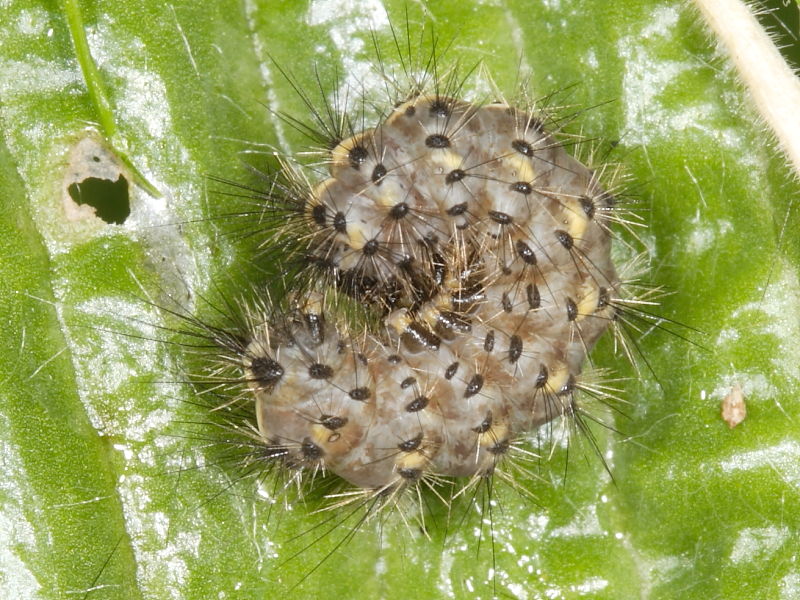
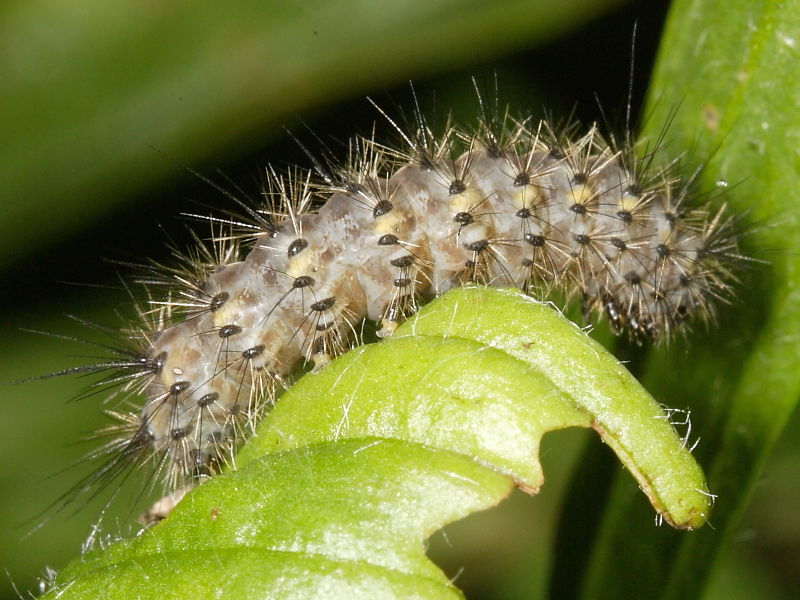
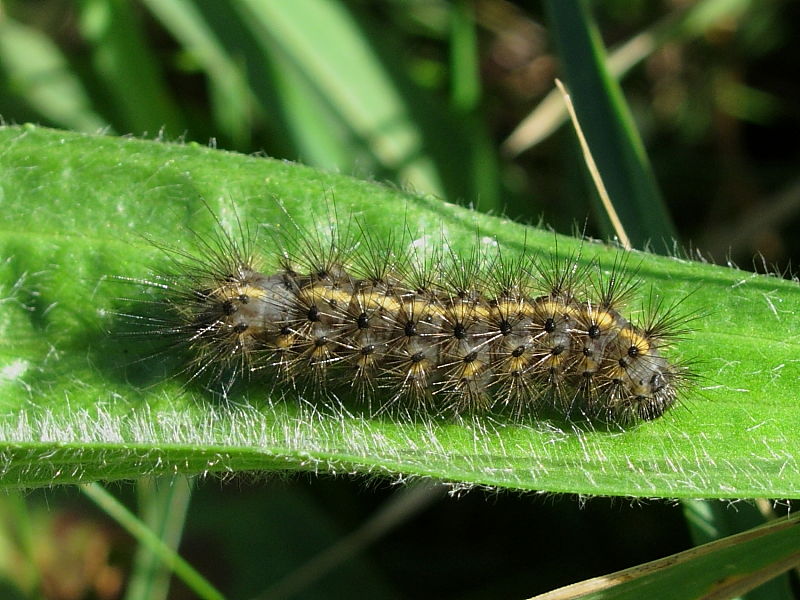
Ruby Tiger cocoon
The cocoons of the Ruby Tiger caterpillar are spun amongst plants and leaf litter.
The cocoon featured left was formed low down amongst the outer leaves of an ornamental conifer in a southwest Cornish garden.
Having overwintered the moth emerged on the 1st of May.
Rearing the Ruby Tiger caterpillar
The caterpillars are easy to rear in captivity but those overwintering are best kept outside in a sheltered place with some leaf litter in which they can later spin their cocoon.
Those found wandering in the spring readily pupate amongst grasses and leaf litter.
There’s some general information on the page How to rear caterpillars.
Recommended reference books
- The Colour Identification Guide to Caterpillars of the British Isles – Jim Porter.
- Field Guide to the Moths of Great Britain and Ireland – Waring, Townsend and Lewington.
- Moths of the British Isles – Bernard Skinnner.
- Provisional Atlas of UK’s Larger Moths – Randle, Fox and Parsons.
